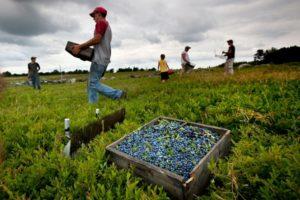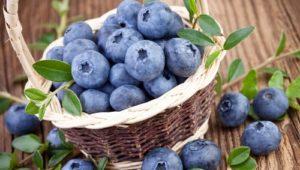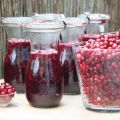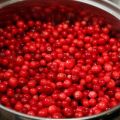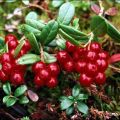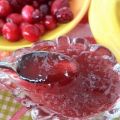Planting and caring for garden lingonberries, reproduction and cultivation in the country
There are few doubts about the beneficial qualities of lingonberries, because these small berries contain vitamins, micro- and macroelements. That is why more and more often the owners of summer cottages are growing these bushes, which, with minimal time and labor costs, generously endow with delicious fruits. The cultivation of garden lingonberry, as well as planting and caring for it, will not cause particular difficulties even for inexperienced gardeners - the culture is undemanding.
Culture specifications
Before embarking on a fascinating process, it is recommended to study the characteristics of the berry culture, this will allow you to avoid shortcomings already at the first stages of growing. It will also be useful to find out the description of the plant, the basic requirements.
Lingonberry is a short shrub that rarely exceeds 45 cm. The plant is evergreen, it does not drop leaves even for the winter. Flowering occurs in mid or late spring. The first fruits ripen in August, but in cool regions the bushes are presented with small red berries even in October.
Frost and drought resistance
The peculiarity of lingonberries is that the bushes do not die even in severe frosts (up to 30 degrees). Thanks to this, the culture is grown in cold regions, shelter is required only for young plants.
Garden lingonberry is a moisture-loving plant, so it tolerates drought rather poorly. You will have to take care of the mulch layer or watering regularly.
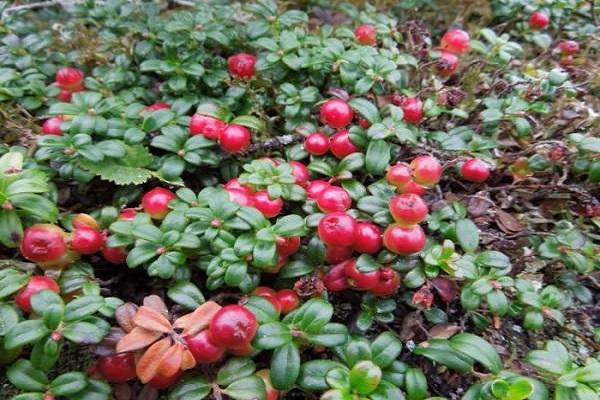
Disease resistance
Diseases on garden lingonberries are extremely rare, but frequent showers or unstable weather conditions can lead to moniliosis or exobasidiosis. It will be possible to prevent diseases in one way - by regular preventive treatments of the bushes.
How fast the bush grows
Lingonberry grows quite quickly, although after growing to the required height, it sharply inhibits development. Pruning is recommended to transform the plant into a lush, compact bush. Once every few years, you need to cut the plant completely, this helps to rejuvenate lingonberries and increase yields.
What year does it bloom and bear fruit
Flowers on bushes appear as early as 1-2 years after planting bushes. Fruiting will not be abundant. The peak yield occurs in the 3rd-6th year after planting. If you carry out cardinal pruning, fruiting will not decrease for several decades.
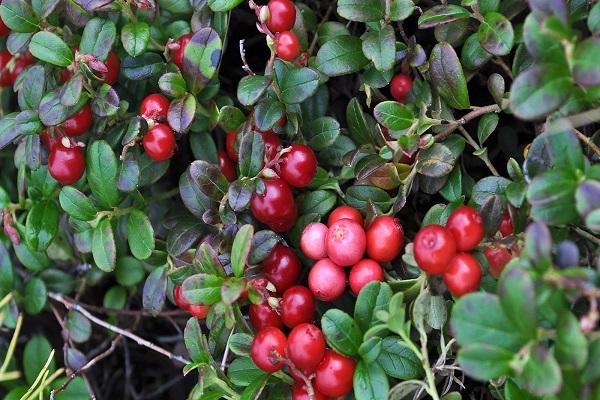
Where are the fruits of lingonberry bushes used?
Lingonberry fruits are universal - used for preservation, baking, desserts. In alternative medicine, berries are very popular, thanks to their unique composition, homemade medicines are recommended for use against many diseases.
Berries are often frozen or dried, and their beneficial qualities do not disappear.
How to properly plant lingonberries on the site
Difficulties in growing lingonberries will not arise even for an inexperienced beginner, the culture is extremely undemanding. If you properly prepare the soil, adhere to the basic recommendations, the bushes will delight you with rapid growth and fruiting.
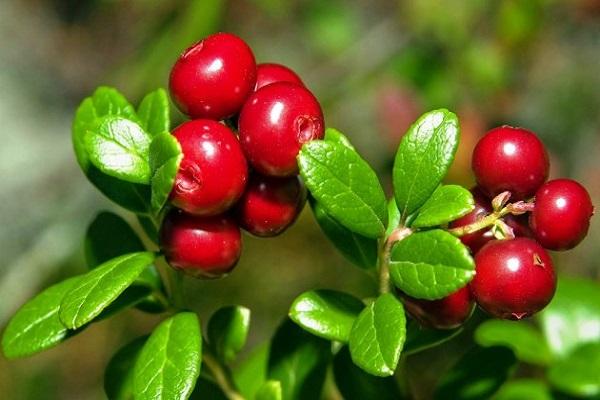
Required soil composition
Under natural conditions, the shrub densely occupies peatlands and swampy areas. Be sure to make sure that the soil for the plant is acidic or peaty. Heavy loams are not welcome, lingonberries can die.
The best soil composition for lingonberry:
- peat;
- a small amount of sand;
- garden soil.
The amount of peat should prevail in the mixture, this will affect the size of the fruit.
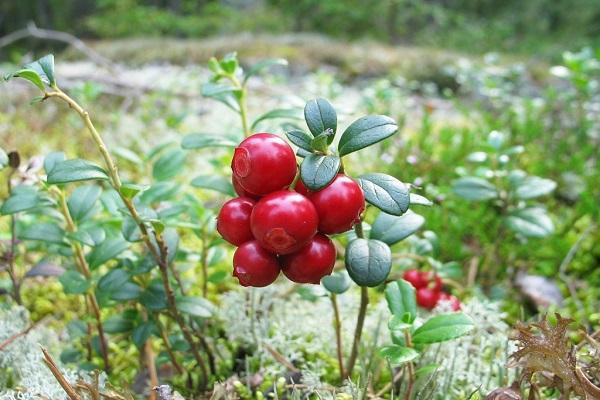
The best place to drop off
Lingonberry is a light-loving plant. The plot in the country for growing bushes should be in a sunny place. It is imperative to take care of the absence of groundwater, an abundance of water will lead to decay of roots and death of plants. In the shade of large trees on a personal plot, it is better not to grow a culture, flowering and fruiting will be scarce.
Landing time and technology
It is better to plant lingonberries in the fall, before the onset of stable cold weather. It is better to hurry up, the plants must have time to take root in order to endure severe frosts without loss. Spring planting is recommended for residents of colder regions.
Plant the bushes at a distance of 25-30 cm. Also, make the row spacing small - up to 30 cm. Be sure to water the lingonberries abundantly after planting. A mulching layer will be useful - with needles of conifers or crushed bark. Mulch will simultaneously protect and increase the acidity of the soil, which is necessary for the plants.
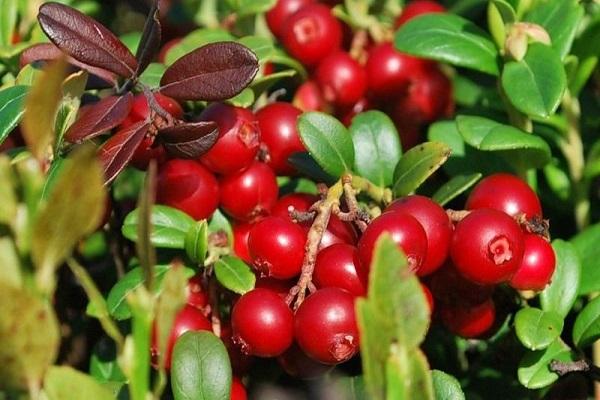
What is needed for good growth
In addition to preparing acidic soil, you will have to take care of proper plant care. To grow generously fruiting bushes, adhere to certain rules. It is not difficult to take care of lingonberries, but a few mistakes are enough to destroy plants or be left without a crop.
Basic growing requirements:
- watering;
- introduction of nutritional compositions;
- preventive treatments against diseases, pests;
- timely pruning.
Another requirement is loosening the soil, renewing the mulch layer. If weeds are not removed, the growth of bushes and fruiting will decrease, the weeds will take some of the nutrients from the soil.
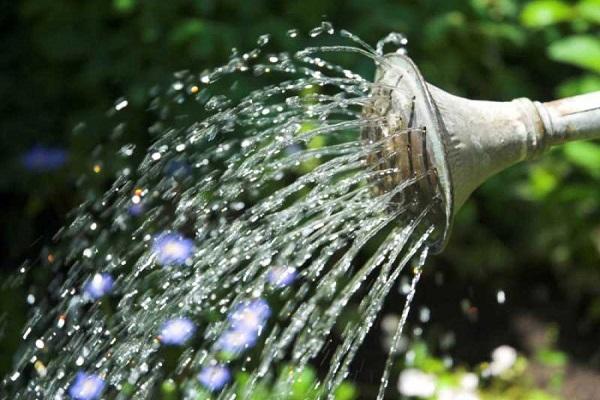
Watering and loosening the soil
It will often be necessary to irrigate the soil in the garden in areas where lingonberries are located, especially in the summer heat. It is recommended to water the bushes at least twice a week. Keep an eye on moisture, excess moisture is detrimental to plants and can provoke root rot. Be sure to use warm water or apply drip irrigation.
Before each watering, it is recommended to loosen the soil surface, the hard crust formed on the soil prevents the penetration of air to the root system. Do not deep loosening, there is a risk of damaging the roots that are located near the surface.
Mulching
It is not recommended to use compost or humus for mulch, the plants will thrive, but bear little fruit.It is better to use materials that increase the acidity of the soil - conifer bark or chopped spruce branches. The use of mulch will reduce the amount of watering and soil loosening.

Plant fertilization
For better growth and fruiting of lingonberries, it is recommended to use mineral fertilizing, especially in spring. Better to make liquid solutions, they are more efficiently absorbed by plants. It is advisable to water the bushes at the root, the ingress of fertilizer on the leaves can lead to the appearance of ugly spots.
After the buds appear, it is recommended to use manganese sulfate (also a liquid solution). Some gardeners completely refuse to make additional fertilizing during this period and simply mulch the soil surface with sand.
Shaping and rejuvenating pruning
Carry out formative pruning annually in the fall. Do not shorten the branches of the bushes strongly, just cut off the very tips. This will affect the general condition of the lingonberry, the plants will be more lush.
Rejuvenating pruning is best done every 5-7 years. It is advisable to leave only a part of the main trunk and 3-5 lateral shoots. It is recommended to rejuvenate the bushes in autumn, with the onset of spring heat, the plants will rapidly grow.

Preventive treatment against insects and diseases
Often, the bushes are affected by fungal diseases, against which chemical solutions will have to be used. Bordeaux mixture is usually used - three times processing is enough for the infection to recede. It is also recommended to use the product as a preventive measure.
Of insects, lingonberries are usually occupied by a leafworm, which is capable of damaging the leaves and buds of bushes. It is recommended to use "Fufanon", "Karbofos", "Aktaru" against the pest. From folk remedies, a decoction of wormwood has proven itself well (brew with a bucket of boiling water and insist 500 g of chopped leaves of the plant).
Whether to shelter for the winter?
The peculiarity of lingonberry is excellent frost resistance. Shelter is needed only for young plants that have not had time to take root in the open field. In cold regions, it is also better not to risk bushes, you need to put agrotextile or a layer of spruce branches on the garden bed.
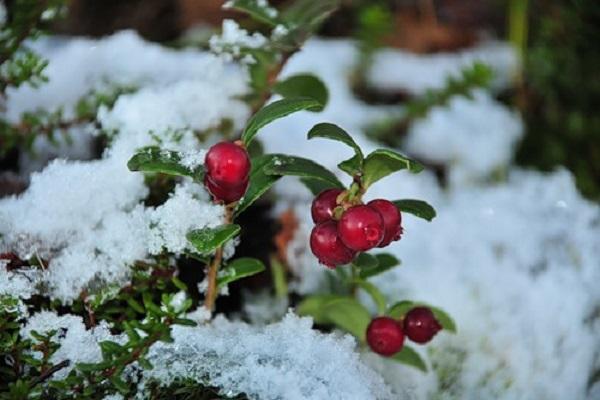
How to propagate a bush
There are several breeding options for lingonberries, each with its own pros and cons. The maternal characteristics are retained regardless of the selected method.
We grow from seeds
Using seeds to propagate lingonberries is a rather unpopular method, since you will have to wait several years before the first fruiting. Another disadvantage of the technology for growing bushes from seeds at home is that stratification of planting material will be needed, otherwise the sprouts will not appear.
It is recommended to send seeds to the ground in the fall. If planting is carried out in the spring, it is imperative to withstand the planting material outdoors during the winter months. When germinating seeds at home, it is recommended to put the container on a light windowsill, without light the sprouts will not appear.
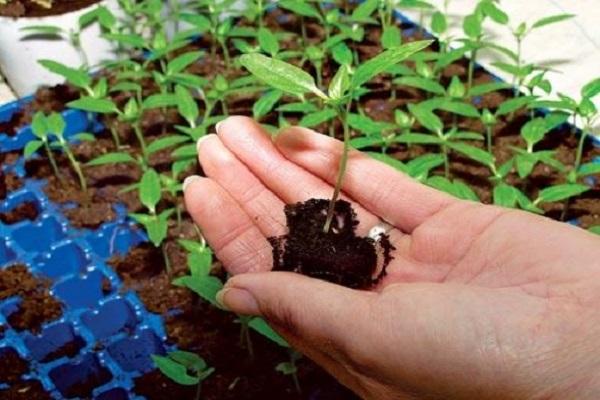
Green and root cuttings
Cutting is a simple and effective way to propagate lingonberries. Both green and lignified shoots take root perfectly. It is recommended to start a fascinating process both in spring and in autumn - the cuttings quickly sprout. The only condition is to build a temporary greenhouse from the film, which will protect the shoots and create the necessary microclimate.
There are no special requirements for care, the main condition is to regularly moisten the soil, especially if the cuttings are planted in spring. Loosen the soil carefully so as not to damage the fragile roots.
By dividing the bush
Dividing the lingonberry bushes is another way to increase the number of plants. It is recommended to do the process in the spring, before growth begins. Residents of warm regions can start dividing even in autumn, the bushes will have time to take root before frost.
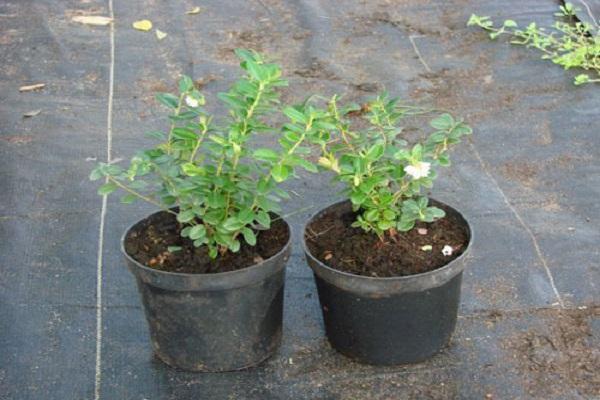
Popular varieties of lingonberry
Almost every year, breeders present to fans of lingonberry new varieties that are distinguished by fruiting and endurance. Some of them have already gained recognition from gardeners, among them:
- Coral. A high-yielding variety, which is distinguished by a compact bush (only 30 cm), a beautiful shape (spherical). Coral blooms and bears fruit twice a season.
- Ruby. A variety that tolerates low temperatures with ease. Fruiting profusely, the berries have a pleasant sweet and sour taste.
- Red Pearl. Shrub lingonberry, grown to obtain a bountiful harvest. It blooms twice a year, with the correct introduction of nutrients, it gives a full harvest.
- Kostroma pink is another noteworthy variety. The height of adult plants is up to 15 cm. Fruiting occurs in August.
Lingonberry is a plant that will not cause trouble even for a novice gardener. It is enough to study the requirements of the bushes once, so that caring for them turns into a pleasure. For the labors, the lingonberry will certainly thank you with delicious and healthy fruits.
